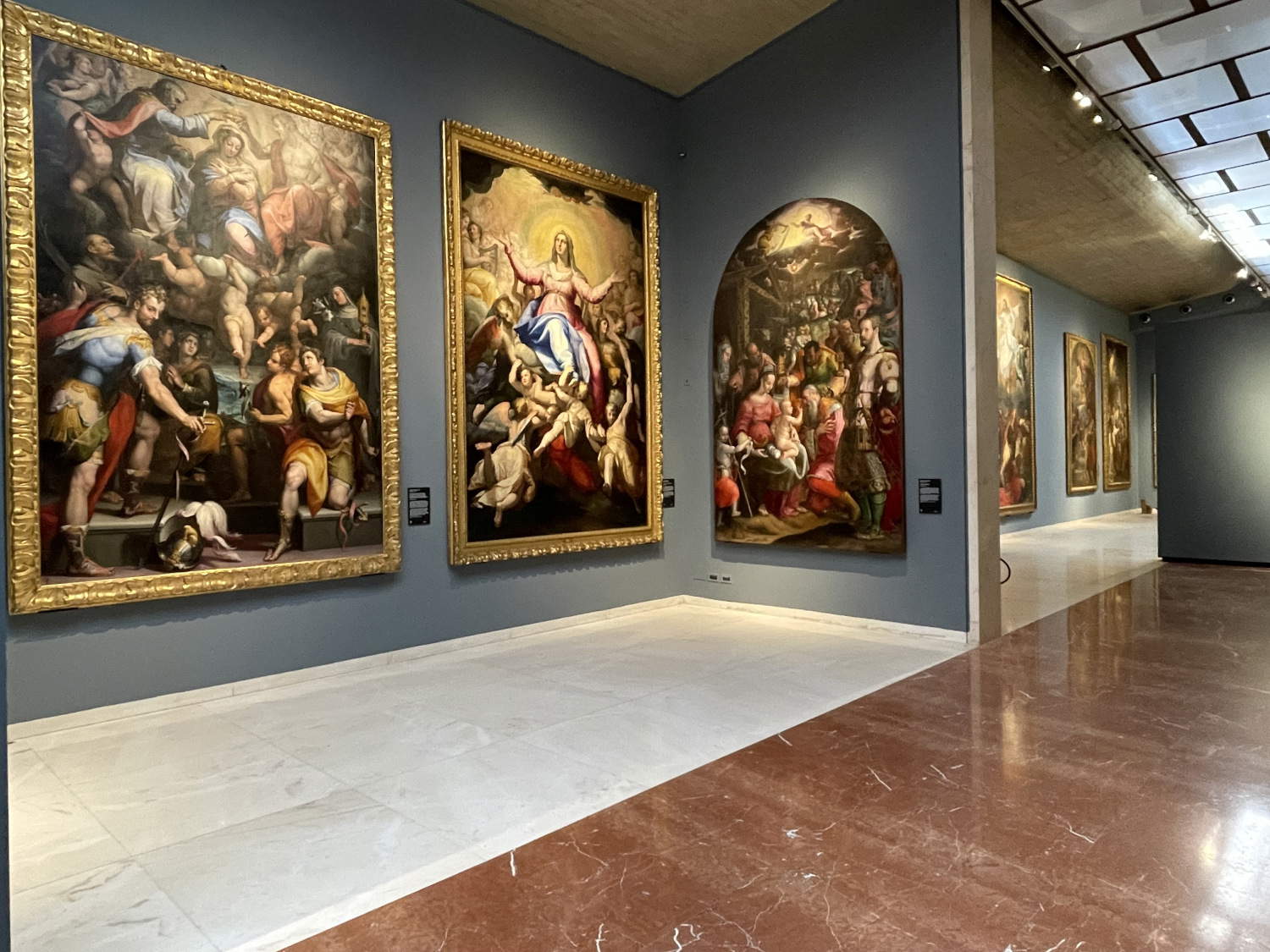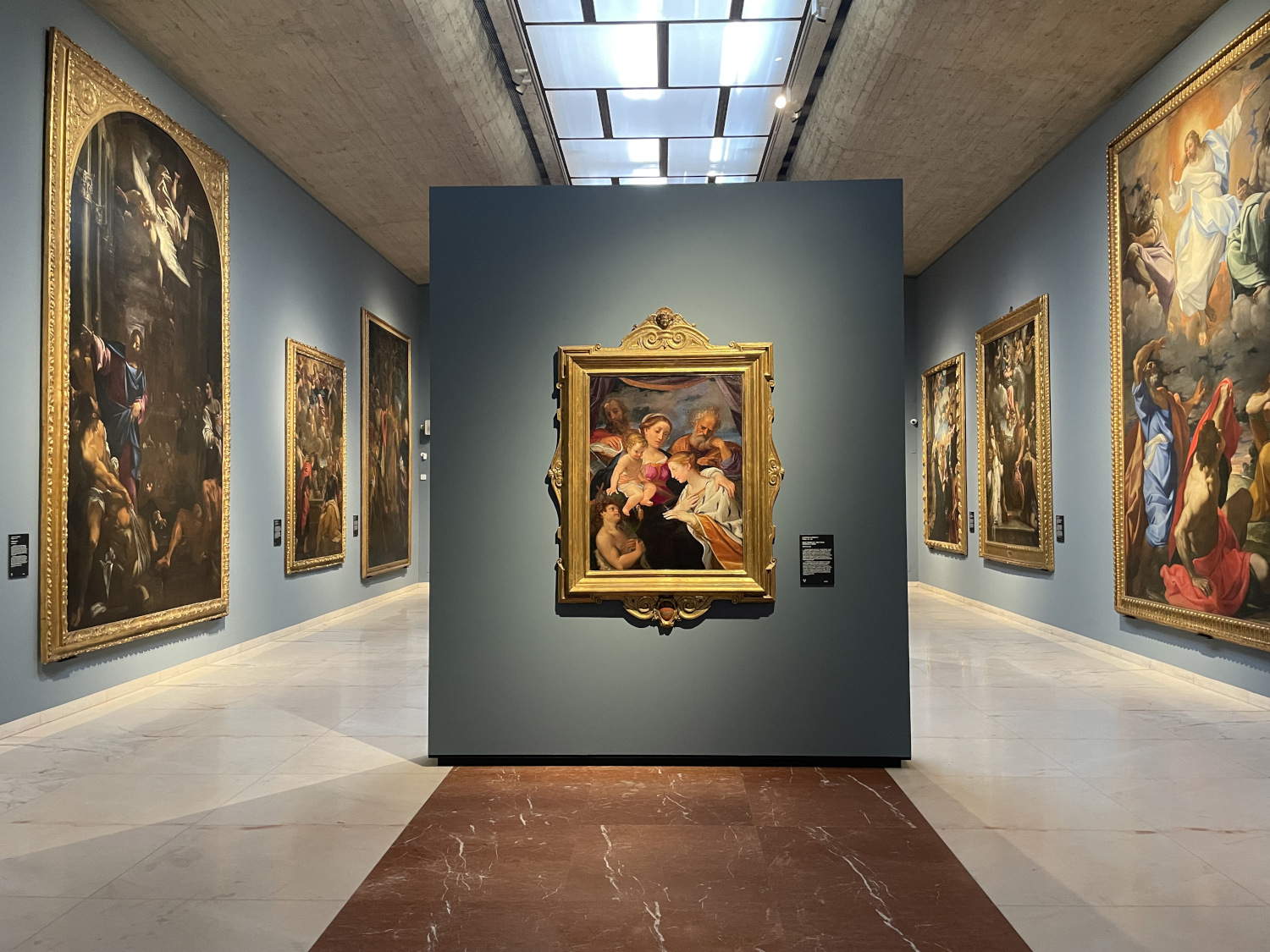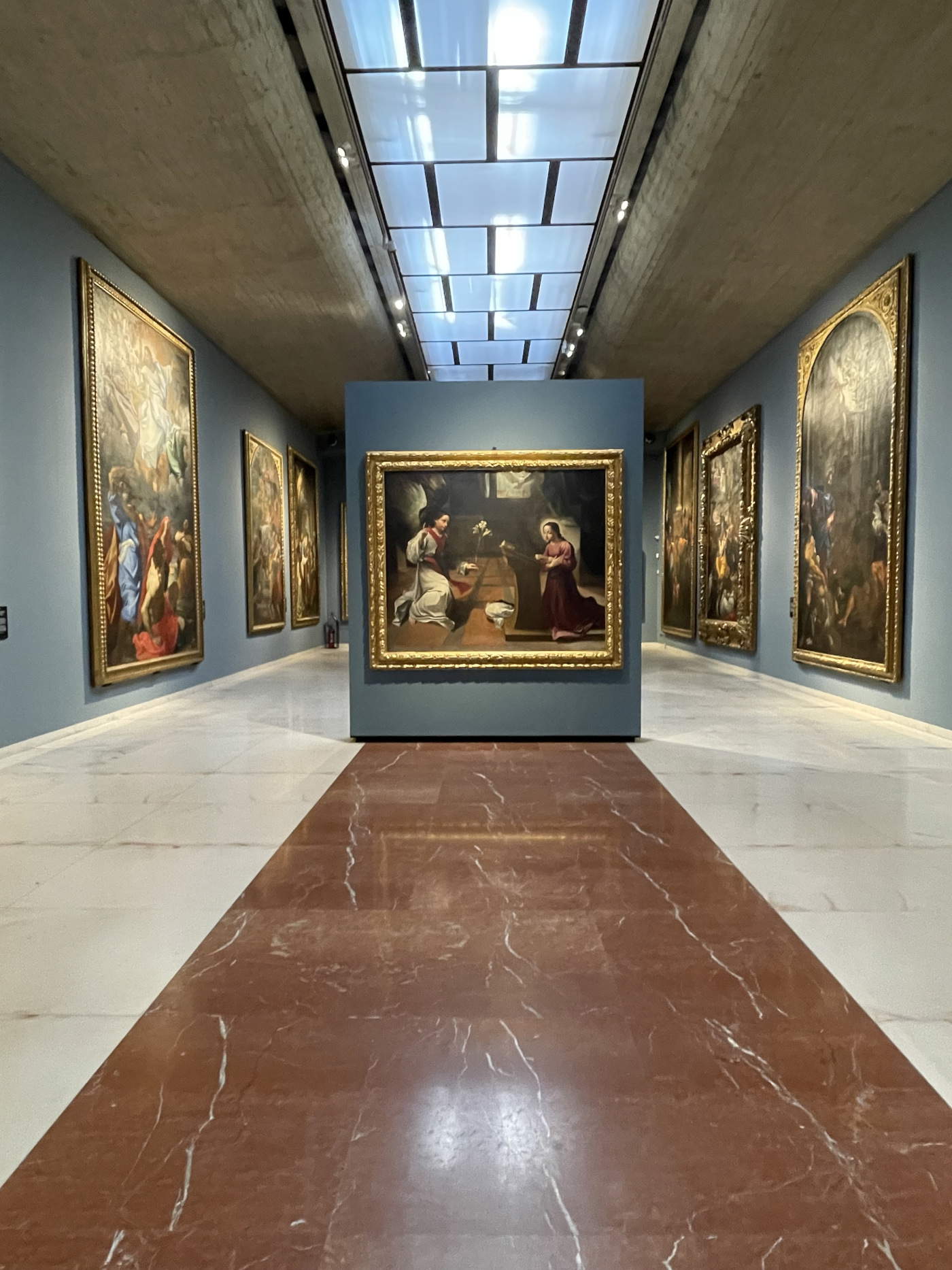The Pinacoteca Nazionale di Bologna unveils to the public as of July 4, 2025 the refurbishment of its rooms dedicated to Guido Reni, the Carraccis and Mannerism. Temporarily closed from Feb. 17 to July 3 to allow work under the National Recovery and Resilience Plan (PNRR) aimed at accessibility and energy efficiency, the rooms reopen with a completely renovated layout. The interventions focused on the maintenance of the works and frames, the introduction of new colors and the adoption of advanced lighting solutions. New exhibition supports have also made it possible to expand the selection of works on display, thus offering the public the chance to admire paintings that have not been visible until now, such as Saints Peter and Paul by Bartolomeo Cesi, Jesus Christ Supported by Two Angels by Orazio Samacchini and Supper at Emmaus by Lorenzo Sabatini, and two canvases that Ludovico Carracci executed for the Certosa of Bologna, the Flagellation of Christ and Jesus Christ Crowned with Thorns.
Orazio Samacchini’sAnnunciation has also regained its original frame, a valuable artifact from the second half of the 16th century, made in the Sansovino style and owned by the Academy of Fine Arts in Bologna. The painting, kept at the Pinacoteca, had been separated from its frame following Napoleonic requisitions.
The walls were also cleaned and repainted; all the brackets and supports to the works were replaced and modernized with more modern and solid steel systems; all the skylights crowning the original design by architect Pancaldi were replaced, both for fire safety issues and for issues of color and refraction of light coming from the attic; and the lights were completely replaced thanks to a lighting plan specifically designed for the paintings and large altarpieces on display. Important maintenance, study and in-depth technical work was carried out on the most significant works of the Carracci school. In particular, great attention was paid to masterpieces such as the Madonna in Glory and Saints known as the Madonna di San Ludovico by Annibale Carracci, The Transfiguration of Jesus Christ and the Pala Bargellini by Ludovico Carracci, and theAssumption of the Virgin by Agostino Carracci.

At the same time, conservation work was carried out on other works of great artistic value, including Prospero Fontana’sAdoration of the Magi, Lavinia Fontana’s The Gozzadini Family, and Orazio Samacchini’sAnnunciation. A major restoration project involved the conservative recovery of the frames, as well as the works: these included the restoration of the monumental frame of the Martyrdom of St. Ursula, as well as work on the original frames of the Madonna degli Scalzi and theAnnunciation by Ludovico Carracci.
The total investment was 980 thousand euros, including tax charges, funded by the National Recovery and Resilience Plan (PNRR) for interventions dedicated to accessibility, still underway in other areas of the museum, and energy efficiency, to which are added about 140 thousand euros of ordinary funds destined for the renewed lighting apparatus and the layout of the rooms, which, following the criterion that was used for that of the Renaissance and Baroque rooms, allows for a greater number of communicative supports, panels and captions for each painting on display.
“The new layout is the result of an important multidisciplinary intervention, which has combined art-historical study, restoration, technological innovation and environmental sustainability,” said Costantino D’Orazio interim director National Museums of Bologna-Regional Directorate National Museums Emilia-Romagna, “thanks to the Institute’s in-house professionals who have worked in the realization of this project. The works, now displayed in a more linear and accessible narrative path, enriched by context panels and nuovdidascalie, accompany the visitor in the discovery of one of the highest moments of Bolognese and Emilian painting.” “This rearrangement,” he concludes, “takes the form not only of an aesthetic and functional update, but of a strategic cultural project that looks to a museum of the future: more inclusive, sustainable and in dialogue with the visitors of today and tomorrow.”


 |
| Rooms dedicated to Reni, Carracci and Mannerism rearranged and renovated at Pinacoteca Nazionale di Bologna |
Warning: the translation into English of the original Italian article was created using automatic tools. We undertake to review all articles, but we do not guarantee the total absence of inaccuracies in the translation due to the program. You can find the original by clicking on the ITA button. If you find any mistake,please contact us.